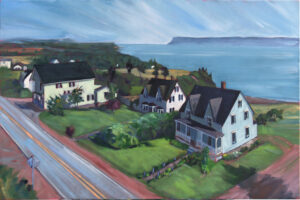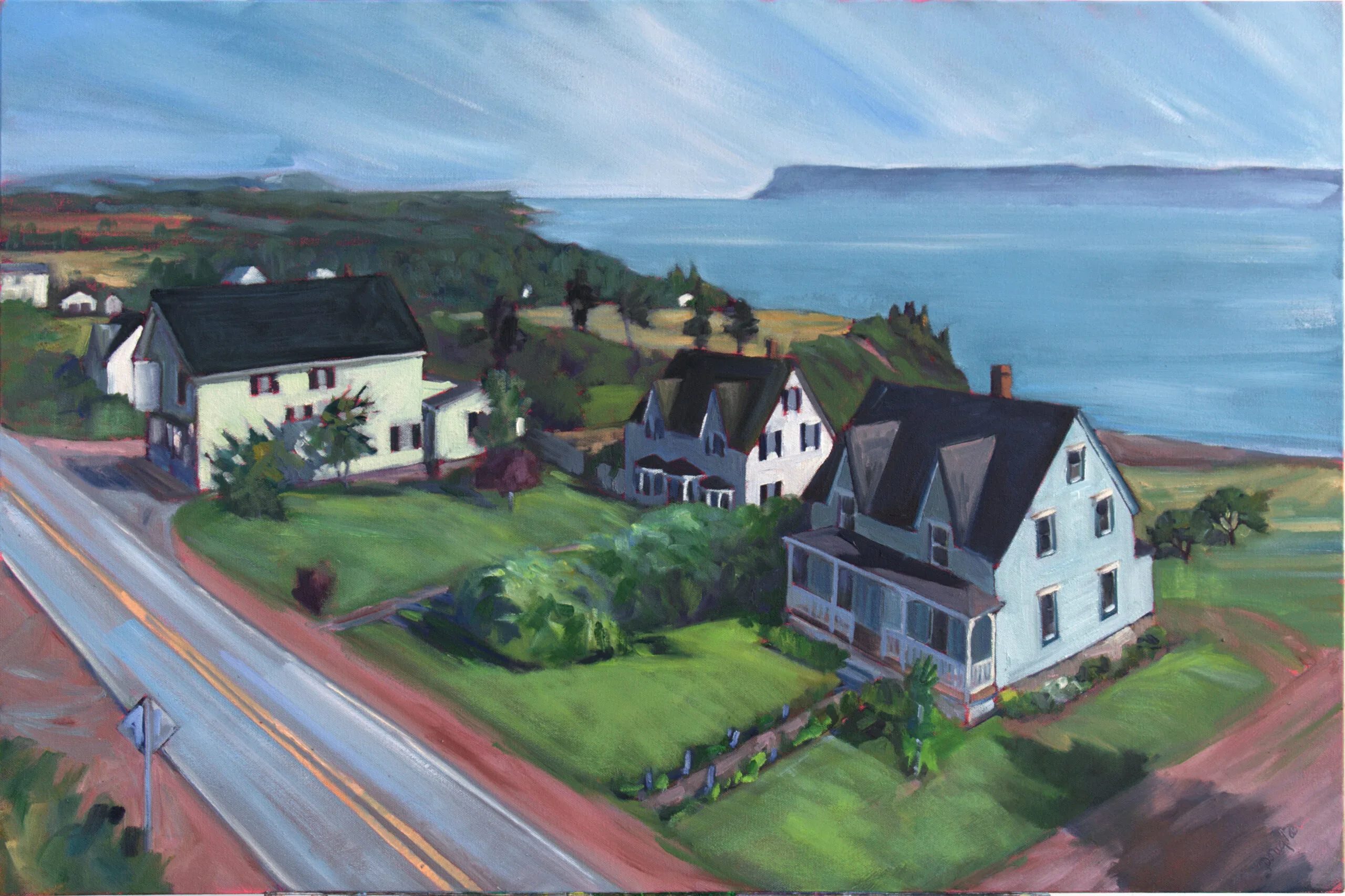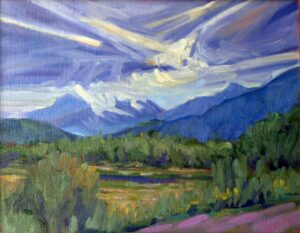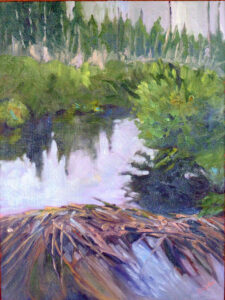
“Sometimes I just have such a wonderful, fulfilling time painting a certain place, I conclude it must be my best painting ever, because I had such a good time,” a reader wrote. “Then when nobody seems interested in it, I realize I was just getting all those good vibes from the painting but other people didn’t, because it actually wasn’t such a good painting. I have been trying to still keep my focus on making a painting a ‘good’ painting, and not just a record of my fun. Just because I had a good time doesn’t mean I produced a good painting; that still requires work.”
I have a related problem: the more a painting or situation challenges me, the better I believe the painting to be. Thus, a painting that I had to hike for, or one where the subject refused to compose itself are the ones that continue to fascinate me.
Viewers seldom agree, because I haven’t necessarily defeated the challenge; often it has defeated me.
My own experience painting with Sandra Hildreth and Nancy Brossard at Madawaska Pond bears out the idea that memory colors our critical judgment: my painting skips right over its putative focal point so the composition is awkward. The treeline is disjointed. However, it’s a recording of a lovely day, far from the madding crowd. There’s a wee little figure (Nancy) in it, so I like it. I won’t pitch it or sand it out just yet.
Meanwhile, Sandy’s painting of the same subject (which you can see here), was right on the money: it accurately depicted the open sky, the enormity of the watershed, and the mood of the place. The public agreed; she sold it before the evening was out.
By and large, painting is not performance art. We hope to bring a whiff of mountain air into our work, or the raking light of evening, but these are illusions and memory.
Yet I still can’t bring myself to believe that the ancillary experiences that went into a painting’s making do not somehow inform the final result. Nor do I think that we or the immediate public are always the best judges of whether a painting is good or not. Had Vincent van Gogh relied on contemporary public opinion to judge his work, he’d have been dead wrong.
I did another painting with Sandra Hildreth years ago. This one was of Quebec Brook, on the same watershed as Madawaska Pond but many miles away by road or canoe. It was a sunny summer day and I again had a lovely time. I was relaxed enough that I didn’t worry that my focal point-the beaver dam-was at the very bottom. Being chill allowed me to take a compositional risk.
The painting at the top of this post, Midsummer, was done from the edge of a cliff in Port Greville, Nova Scotia, over two days. The soil being soft, I managed to slide over the edge with my easel, landing in a patch of alders about ten feet from the rim. Had nature not put that ledge near the top of the ridge, I’d have splatted on the road below me. Yes, that experience has changed my view of the painting, but for good or ill, I cannot say.



